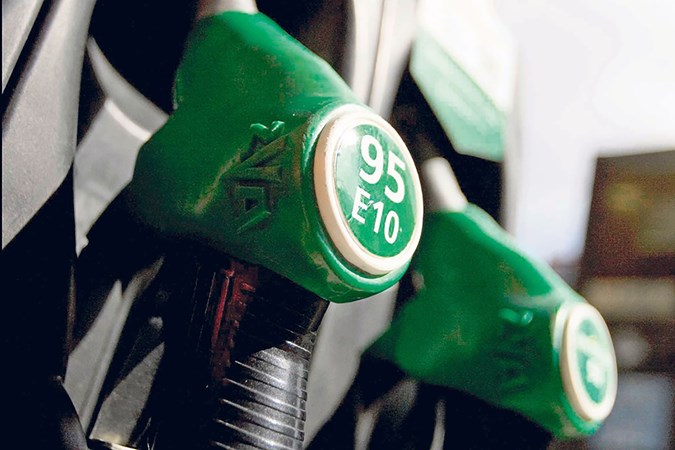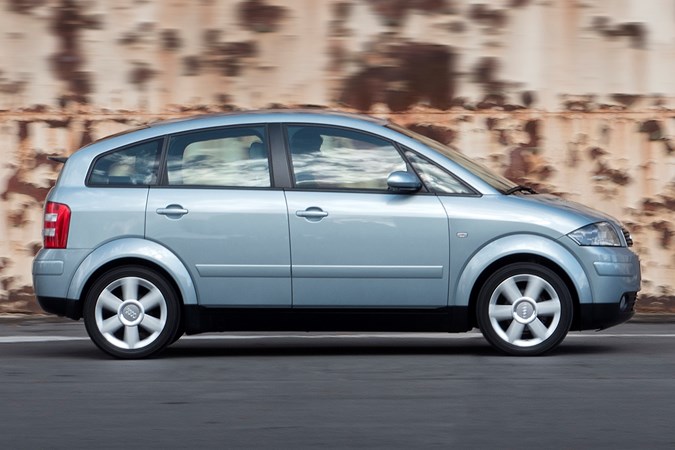Petrol has changed in the UK. As of September 2021, the standard petrol you get at UK forecourts has changed from E5 to E10 grade. Here’s everything you need to know about E10 fuel.
If you’re a driver that doesn’t pay much attention to what fuel you put in your car beyond checking whether it is petrol or diesel then the good news is that the majority of cars aren’t affected and can use E10 without any problems whatsoever. It was in widespread use across Europe before it arrived in the UK and new cars have been optimised to run on E10 since 2016.
Some cars – largely older ones – won’t be able to run on the new fuel, though, so owners of those vehicles will need to do something about it.
What is E10 petrol?
The newer grade of petrol contains up to 10% renewable ethanol, or bioethanol, which is a kind of alcohol that is made from plants. The result is a fuel which contains less carbon and therefore produces marginally less CO2, making it better for the environment.

This is nothing new – as the name suggests, E5 petrol contains 5% renewable ethanol so this is just a case of upping the ratio. This marginal change could make a big difference, though – the Department for Transport reckons that switching UK forecourts to E10 petrol could cut CO2 emissions by 750,000 tonnes a year, which it says is the same as taking 350,000 cars off the road.
What is the bad news?
You would think that if the switch from E5 to E10 was a purely positive one and would be massively advantageous when it comes to emissions then it would have been done ages ago, so there must be a catch, right? There is, of course.
Not only can E10 petrol slightly reduce your fuel economy but it is also not compatible with all cars. The impact on fuel economy change is relatively small, at around 1%, but this could add up over the lifetime of a car if you do loads of miles.
The other, and bigger problem for some motorists, is that not all cars will be able to run on E10 fuel. Before you run out and trade your petrol car in for a diesel or an electric car, cars built since 2016 have not only been made to be able to run on E10, they are optimised to do so.
What cars can’t run on E10 petrol? Is there an E10 checker by reg?
The first place to go if you want to check if your car can run on E10 petrol is the Government’s website. There is an E10 checker by reg on there – a dedicated tool there which tells you whether your car is compatible with the fuel.
Most manufacturers’ models from 2000 onwards will be fine, although there are some exceptions. The checking service should highlight this, but some common models that aren’t cleared for use include the following:
Audi

- A2 1.6 FSI from 2003-2005 (above)
- A3 1.6 FSI, model year 2004
- A3 2.0 FSI, model year 2004
- A4 2.0 FSI, model years 2003-2004
- A4 Saloon petrol engine models with OEM parking heater, of model years 2001-2008 and Avant from 2002-2008. E10 is not suitable for use during the heating season in countries with colder climates
Ford
- Mondeo 1.8 SCI from 2003 to 2007
Lexus

- IS250 2.5 litre V6 with engine 4GR-FSE made between August 2005 and September 2007 (above)
- GS300 3.0 litre V6 with engine 3GR-FSE made between January 2005 and September 2007
- LS460 4.6 litre V8 with engine 1UR-FSE made between August 2006 and September 2007
SEAT
- Toledo 2.0 FSI (110 kW) ‘BLR’ manufactured from September 2004 to November 2005
- Leon 2.0 FSI (110 kW) ‘BLR’ manufactured from July 2005 to November 2005
- Altea 2.0 FSI (110 kW) ‘BLR’ manufactured from May 2004 to November 2005
Toyota
- Avensis 2.0 litre with engine 1AZ-FSE made between July 2000 and October 2008
- Avensis 2.4 litre with engine 2AZ-FSE made between June 2003 and October 2008
Vauxhall
- Models with the 2.2 litre direct injection petrol engine, motor code: Z22YH (Vectra, Signum, Zafira)
Volkswagen
- Lupo 1.4 (77 kW) made from August 2000 to November 2003
- Polo 1.4 FSI (63 kW) made from February 2002 to June 2006
- Golf Mk4 1.6 FSI (81 kW) made from November 2001 to May 2004
- Golf Mk estate 1.6 FSI (81 kW) made from October 2001 to October 2006
- Bora 1.6 FSI (81 kW) made from October 2001 to September 2005
- Bora estate 1.6 FSI (81 kW) made from October 2001 to September 2005
- Golf Mk5 1.4 FSI (66 kW) made from November 2003 to November 2004
- Golf Mk5 1.6 FSI (85 kW) made from August 2003 to May 2004
- Golf Mk5 2.0 FSI (110 kW) made from January 2004 to May 2004
- Touran 1.6 FSI (85 kW) made from November 2002 to May 2004
- Touran 2.0 FSI (110 kW) made from October 2003 to May 2004
For models built before 2000 it is less clear. The RAC Foundation reckons that there are “tens of thousands” of older cars that will not be able to run on E10, although it does say that many of these will be classics that won’t be doing more than a handful of miles a year. More modern classics, such as Volkswagen Golf GTIs from the 1990s and first generation Mazda MX-5s are some of those that might be impacted.
If you do mistakenly fill your car with E10 then it should be ok as a one off, and you should still be able to still drive it as normal. The advice is that you revert to E5 the next time you fill up though.
The other problem might be if you leave your car undriven for a long period of time – tests have shown that the extra ethanol in E10 fuel could damage some components in older cars
What happens if I put E10 petrol in an old car?
It’s not recommended to use E10 petrol in an old or classic car as ethanol is corrosive. Given the higher percentage of ethanol in E10, there’s a greater chance it will corrode the materials in your classic car’s fuel system over time. Ethanol also absorbs water, and so your classic car may be more susceptible to moisture build-up if left stationary with E10 onboard for a long period of time.
What can I do if my car won’t run on E10?
The good news is that forecourts haven’t turned off the supply of E5 petrol altogether, and they are required to provide sufficient volumes of the older fuel for those cars that aren’t compatible.
The downside is that the supply is generally only the more expensive premium fuel – they are the ones with names like Synergy, Ultimate, Momentum or V-Power. Performance cars are happier using these fuels anyway, as it is better for the engine, but you do pay for the privilege – super unleaded is around 10 pence a litre more than standard, which is only piling more pressure on your wallet at the tank when prices are so high right now.
E5 will remain available at forecourts where more than one grade of petrol is sold, but don’t rely on this being the case at smaller, more rural filling stations. In any case, the dispenser and nozzle should be clearly labelled with E10 or E5
FAQs
-
Is E10 the same as unleaded?
Yes. E10 is a type of unleaded petrol that uses around 10% renewable ethanol in its chemical makeup. So, your petrol vehicle should be okay to run on E10 but we recommend checking on the government website first to ascertain before buying.
-
Is E10 better than E5?
E10 is better than E5 petrol for the environment as it uses more renewable ethanol – 10% compared to 5% - and so produces less CO2. As for fuel economy, according to the government, using E10 petrol regularly will result in a 1-2% reduction in fuel economy with a higher level of ethanol in the mix.
Just so you know, we may receive a commission or other compensation from the links on this website - read why you should trust us.




